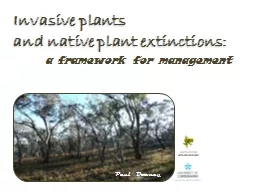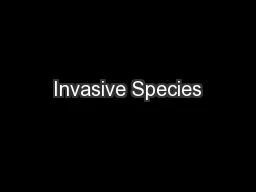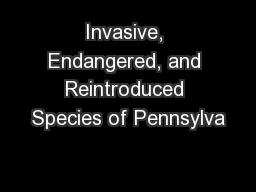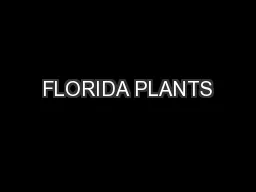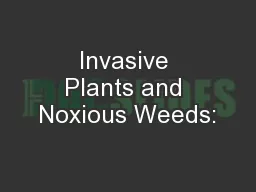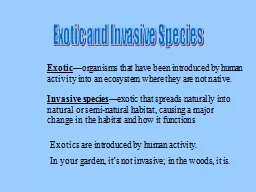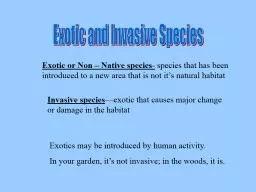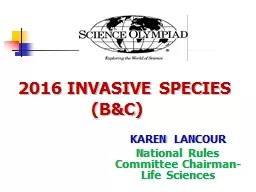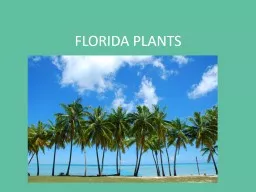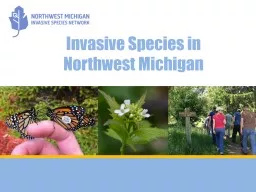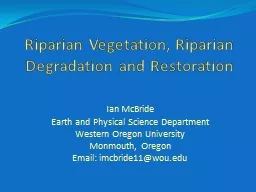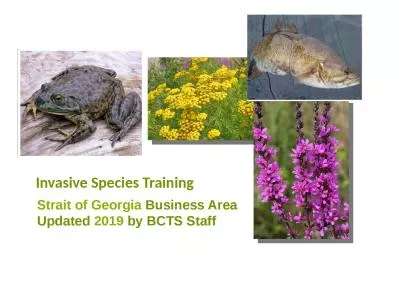PPT-Invasive plants and
Author : conchita-marotz | Published Date : 2019-11-23
Invasive plants and native plant extinctions Paul Downey a framework for management BioScience 48 607615 1998 New Zealand Journal of Ecology 12 116 1997 PLoS Biology
Presentation Embed Code
Download Presentation
Download Presentation The PPT/PDF document "Invasive plants and" is the property of its rightful owner. Permission is granted to download and print the materials on this website for personal, non-commercial use only, and to display it on your personal computer provided you do not modify the materials and that you retain all copyright notices contained in the materials. By downloading content from our website, you accept the terms of this agreement.
Invasive plants and: Transcript
Download Rules Of Document
"Invasive plants and"The content belongs to its owner. You may download and print it for personal use, without modification, and keep all copyright notices. By downloading, you agree to these terms.
Related Documents

